From Vietnam to China: five Asian designers ready to explode

Rui Zhou, Ximon Lee and Commission are just some of a new crop of Asian designers repping their heritage while making inspired garms.
Style
Words: Rachel Hodin
Photography: Peter Ash Lee
Styling: Paul Bui
The indelible impact that designers of Asian descent have had on the fashion industry is as far-reaching and wide-ranging as the continent itself. Think of Rei Kawakubo’s relentless defiance of conventional norms, the wave of young and directional South Korean designers to emerge in the past decade, and those Americans of Asian ancestry (Alexander Wang and Jason Wu to name two) who have cornered the mainstream market.
The common thread among these names and so many others is not merely their Asian heritage, but the ingenious ways in which they’ve challenged common assumptions, stereotypes, and motifs often associated with their heritage and ethnicity.
Following in the footsteps of Sandy Liang, Snow Xue Gao, Prabal Gurung, and many more, the new(ish) crop of Asian and Asian-American, Parsons-bred design luminaries is giving us all some much-needed, renewed hope for the future of fashion.
Hailing from Vietnam and South Korea to a range of remote and central cities in China, each talent brings a distinct, fresh perspective to the industry, championing new and never-before-used textiles; culling inspiration from their unique and intimate relationships, experiences, and backgrounds; and creating wearable yet wholly original collections that’ll leave you utterly gagged.
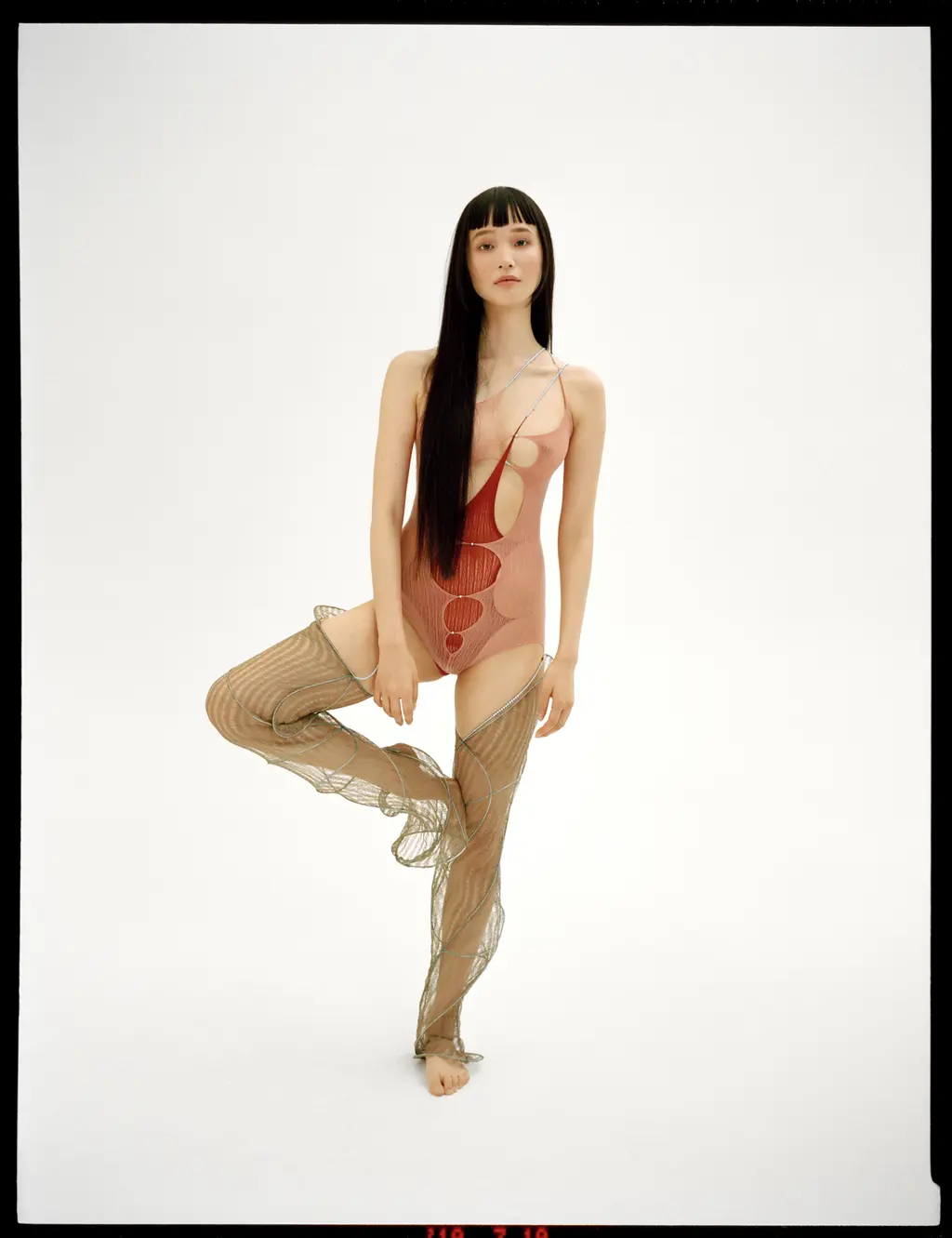
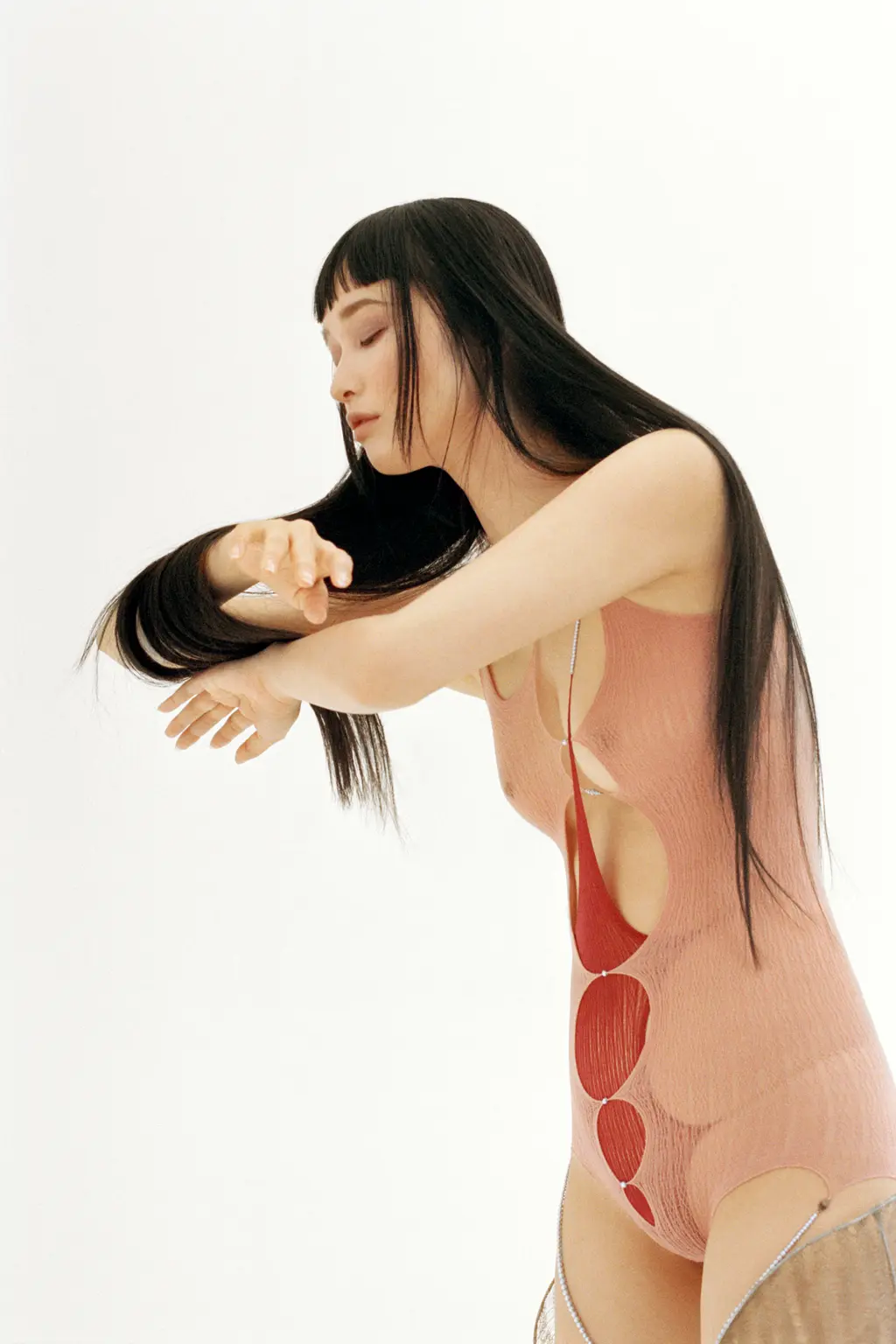
Rui Zhou
Age: 25
What’s the coolest way you’ve seen your clothes styled?
I love seeing people wear it without a lot of extra stuff – I think it looks really pure. And I love seeing people mix it with some shirts or some other really practical items of clothing.
Your work kind of reminds me of stockings with rips or holes in them. Was this intentional?
I thought of this as well. When making my collection, I was thinking a lot about women’s objects because my concept is about three women in my family: me, my mom, and my sister. I was trying to convey a really female experience and feeling, and so I was researching women’s objects and found that stockings are a very obvious example of this. So I tried to manipulate my fabric to make it appear almost like stockings.
I read that you’re intrigued by the idea of pain. Is this something you genuinely enjoy?
Everyone experiences some pain at some point, and I just want to express that feeling. It’s another form of tension as well.
I just enjoy the pain during the design process, but I don’t really enjoy the feeling of pain in a positive way. The entire design process is a real struggle, which is another way I experience pain. Because every time I try to think of some really fresh idea, I have to first look at a lot of references and make sure that what I’m doing hasn’t been done before and is original. So it requires a lot of brainstorming.
I read that you’re interested in exploring the feeling of addiction. Is that true?
In a sense, I am kind of addicted to pain, but only in my habits. I was born in Hunan province, China, and in my city, all of us like spicy food. Which may explain one of the reasons why sometimes I really enjoy pain because eating spicy foods can be painful.
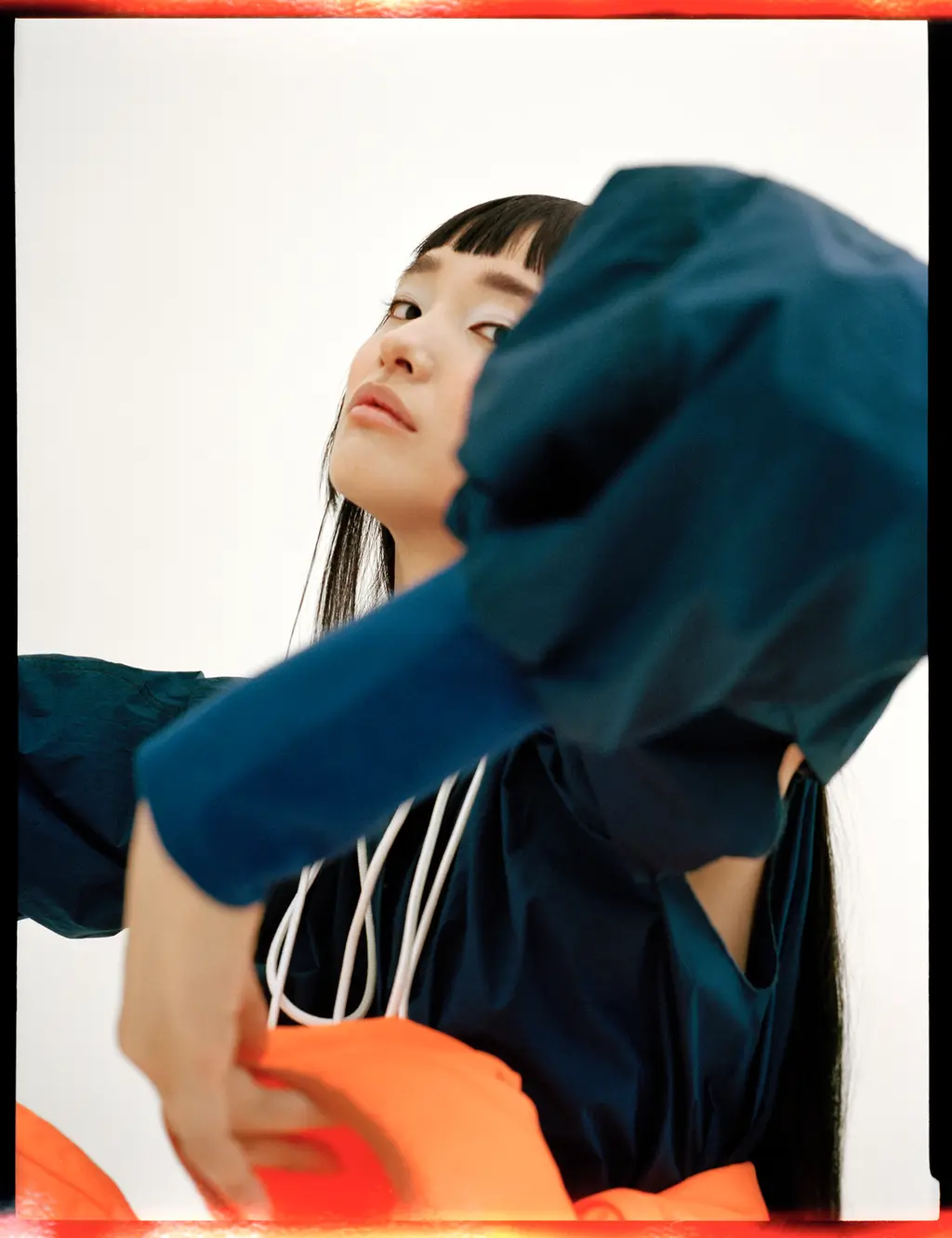
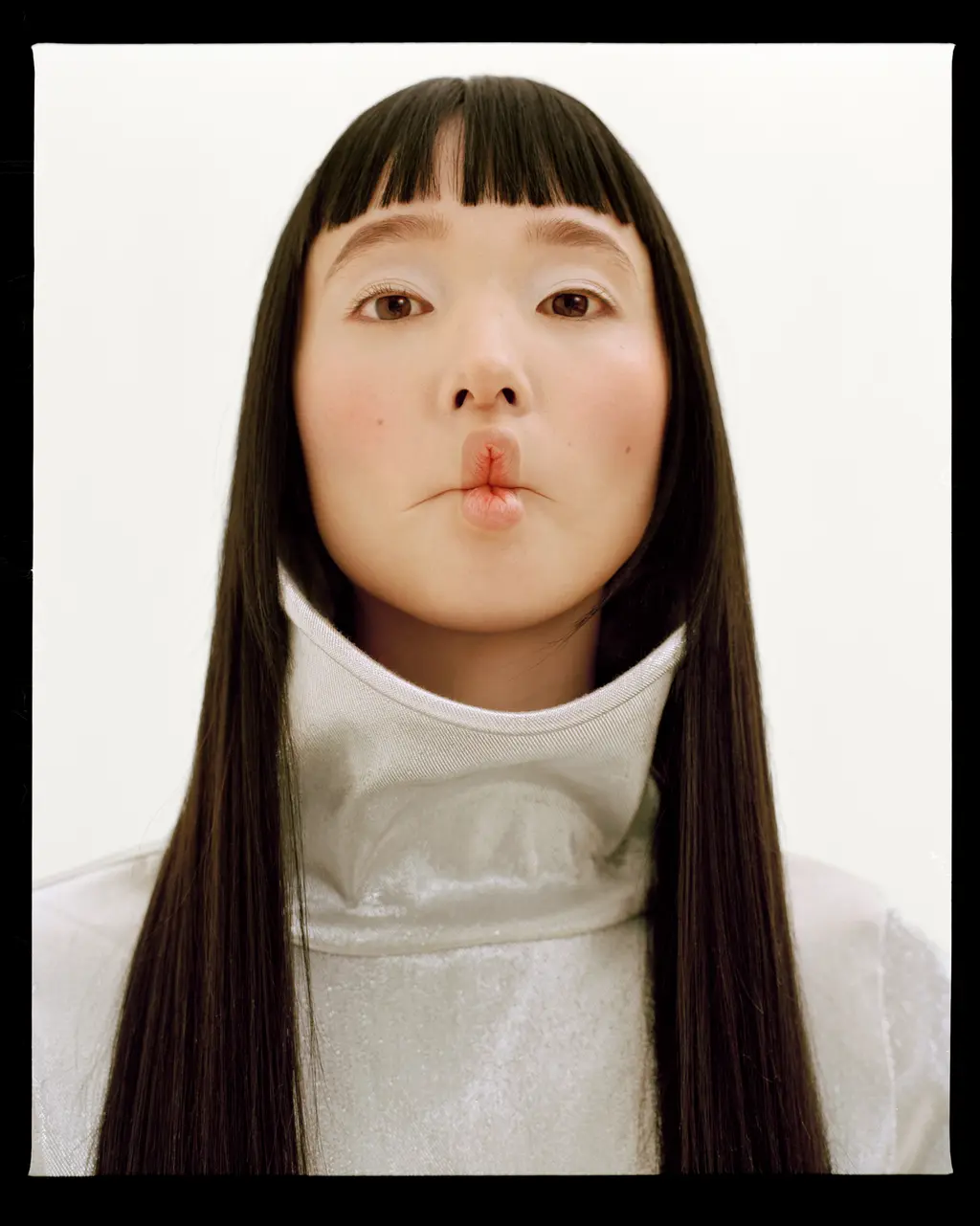
Andrea Jiapei Li
Age: 29
Comfort seems super important to you. What, in your opinion, are the most crucial design details to ensure a garment is as comfortable as possible?
To me the idea of comfort is two-fold – the physical and the psychological/emotional comfort. While I tend to use functional fabrics, oversized yet elegant silhouettes, and sportswear-inspired details to ensure physical comfort of the garments, I hope my designs play a role in modern women’s emotional world as well, whether it is to instil confidence and strength, or to bring new perspectives about how women could see themselves. At the end of the day, being comfortable with who you are is one of the most valuable personal assets.
Can you tell us the story behind Rei Kawakubo buying your first collection for Dover Street Market?
Andy and James, the buyer and the store manager at the time, reached out about my graduate collection soon after it was shown in the Parsons MFA show. It was not intended to be a commercial collection, so I didn’t even have or know about line sheets [documents providing information on a product for wholesale sales]. I just showed up at their office with two suitcases of samples. We later provided the line sheet and received an order from Dover Street Market, which felt surreal and really marked the beginning of the brand.
I was never in direct contact with Rei, but I was a bit surprised to learn that our store installation proposal had to be personally reviewed and approved by her. I think her dedication and hands-on approach are very respectable and likely have contributed to her long-lasting creative and commercial success.
For your SS19 collection, you celebrate women who have challenged the conventional meaning of “dressing like a woman” in the workplace. Are there any women in real life (or fictional characters) who exemplify this idea to you?
As I was working on the SS19 collection, one of the earliest mood board images was that of Mae Jemison, the first black woman to travel in space. In this photo, Mae Jemison was aboard a space lab module, gravity-free, and surrounded by dashboards, wires, and tools. She was wearing a pair of cargo pants with a toolbox strapped onto her thigh, and a jumper with her mission insignia on it, looking into the camera exuding such grace, confidence, and hopefulness.
To me, Mae Jemison really challenged the conventional notion of “dressing like a woman” in the workplace on both literal and figurative levels, as she was able to defy gender (as well as racial) stereotypes as to what a woman could accomplish professionally, as well as the type of workplace where she may strive and make an impact.
What is your most treasured possession in your wardrobe?
It is a NASA bomber jacket I bought a few years ago when I visited the Smithsonian National Air and Space Museum in DC for the first time. When I was a kid I was already fascinated by the topics of space and space exploration – I’d read Hawking’s A Brief History of Time and learned about NASA’s role in space exploration, which is why I was so excited to visit that museum and come across this jacket with a NASA patch on it that I could take home with me.
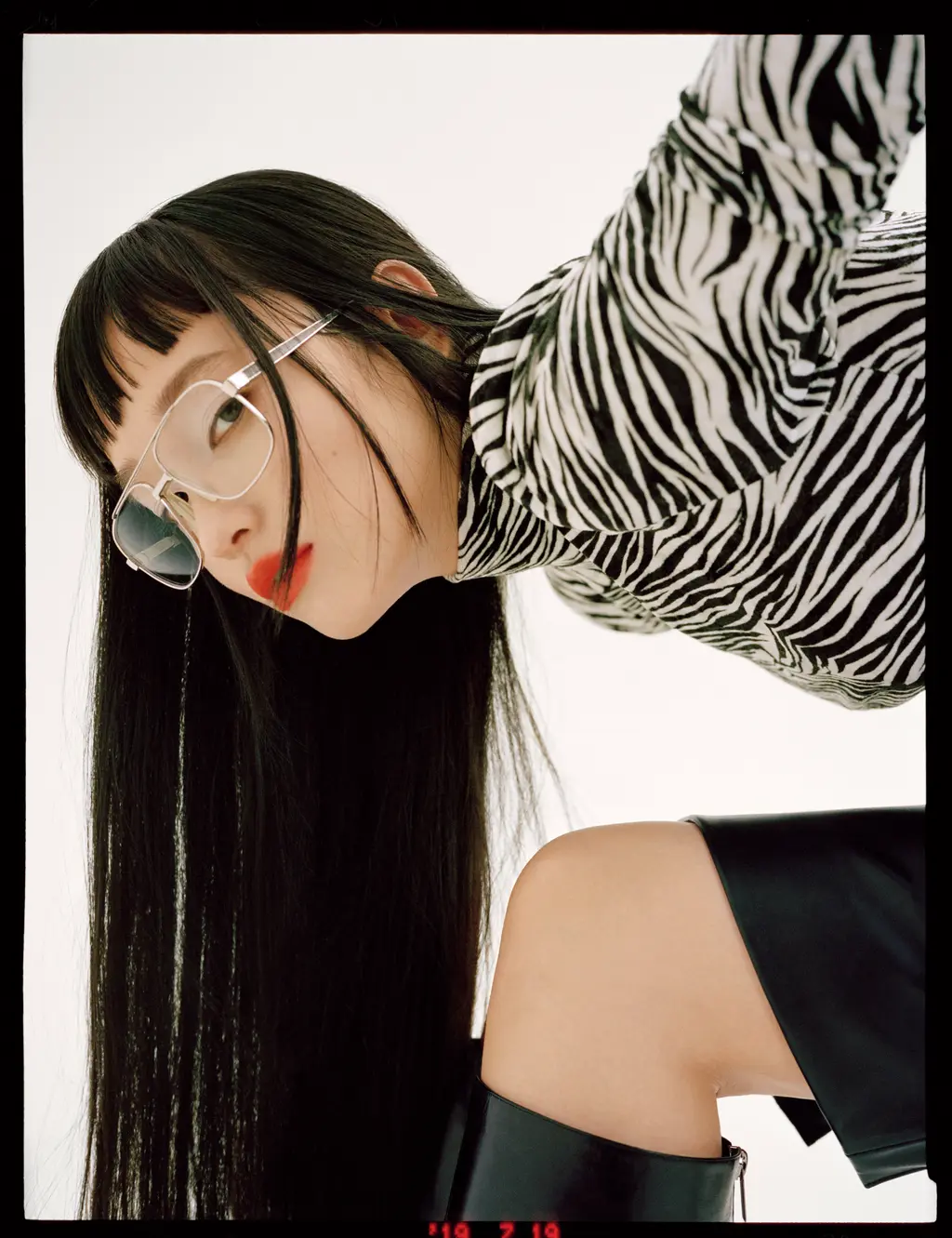
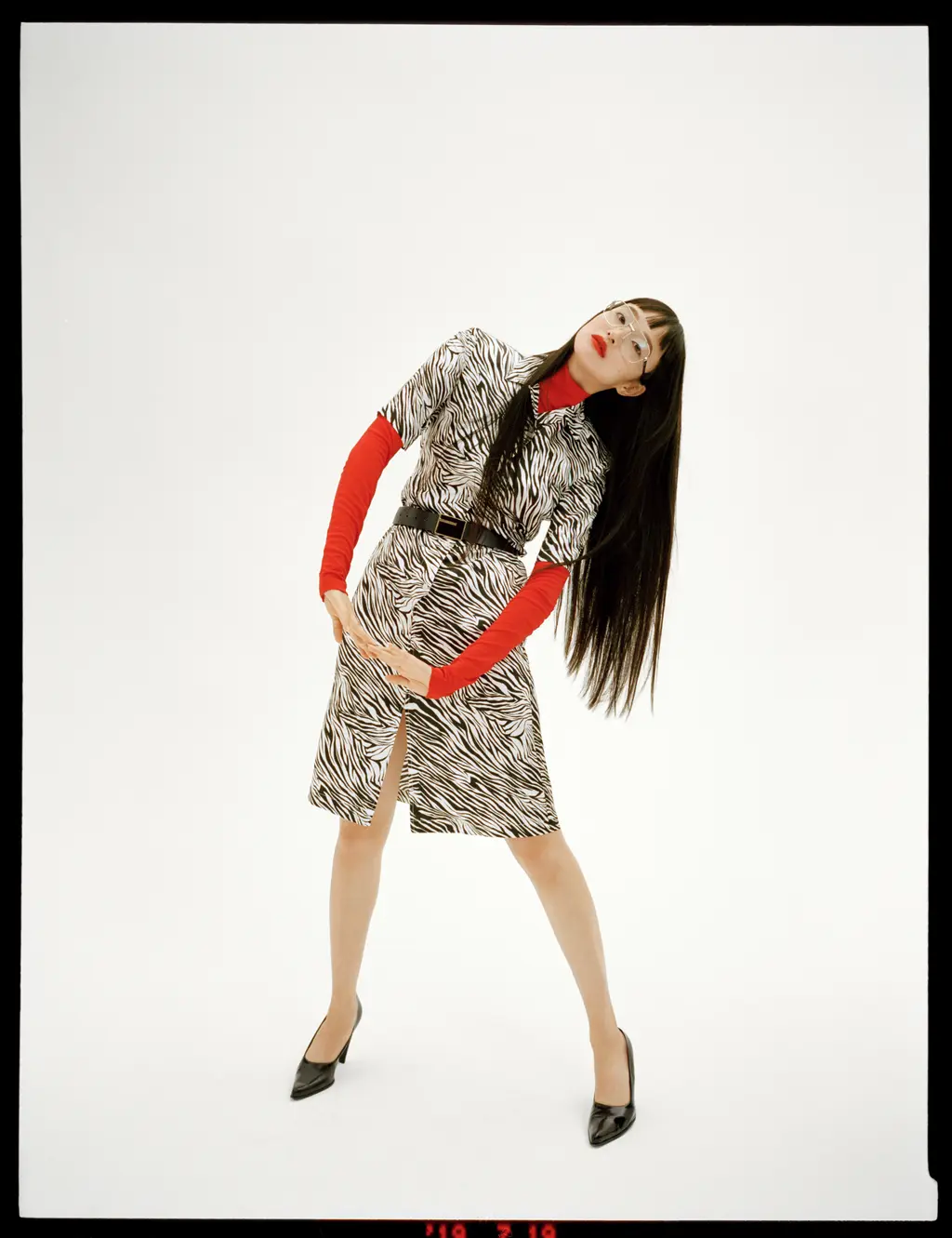
Commission
Age: Jin, 31, Huy, 29, Dylan, 27
Your fabrics look so comfy and plush. Where do you source them from, and what’s your favourite fabric to work with?
We work with mostly Italian mills and have recently started experimenting with [fabrics] from Japan. Our favourites are viscose twill, silk chiffon, and fluid polyester. These give us a lot of room to play with our custom prints, which we would say is becoming a huge part of our visual identity. More importantly, they are reminiscent of what our mothers used to wear – we love the irony packed in a luxurious silky texture that carries an inexpensive synthetic sheen.
Your references and sources of inspiration are always so specific, nuanced, and original – which, in itself, challenges those tired Asian tropes and motifs that we’ve seen fashion designers use. Who else do you think does (or did) this particularly well?
Thank you for recognizing that, as it’s been such a key approach to the way we’re telling our stories with Commission. We think a lot of Asian and East Asian artists have been and are still doing this pretty well and uniquely. We love the work of several Japanese and Thai and Chinese photographers dating back to the 1960s, ’70s, and throughout the ’90s, like Keizo Kitajima, Masato Seto, and Liu Xiaodong – to name a few.
They tell the Asian stories in such a pure voice that celebrates Asia for what it is and not as a romanticized vision like how fashion or art in the West has done for quite a long time. We think that to combat the stereotypical and blanketed notions of Asia and its many distinct regions is to own the story and to tell it from the inside out instead of through a looking glass.
Your collections are also so informative; just reading about them, I learned so much about Asian culture. Are there any other aspects of Asian culture that you guys are inspired by right now?
I think for us, it is a constant time travel to when we grew up and how the vision of mothers and the women surrounding us evolved through those decades. We are also very excited by the variety of beauties and cultural nuances not just within our region of East and South-East Asia but also across the continent.
Your guilty pleasures?
All-you-can-eat hot pot and a Korean spa in the winter. And we do it together, obviously.
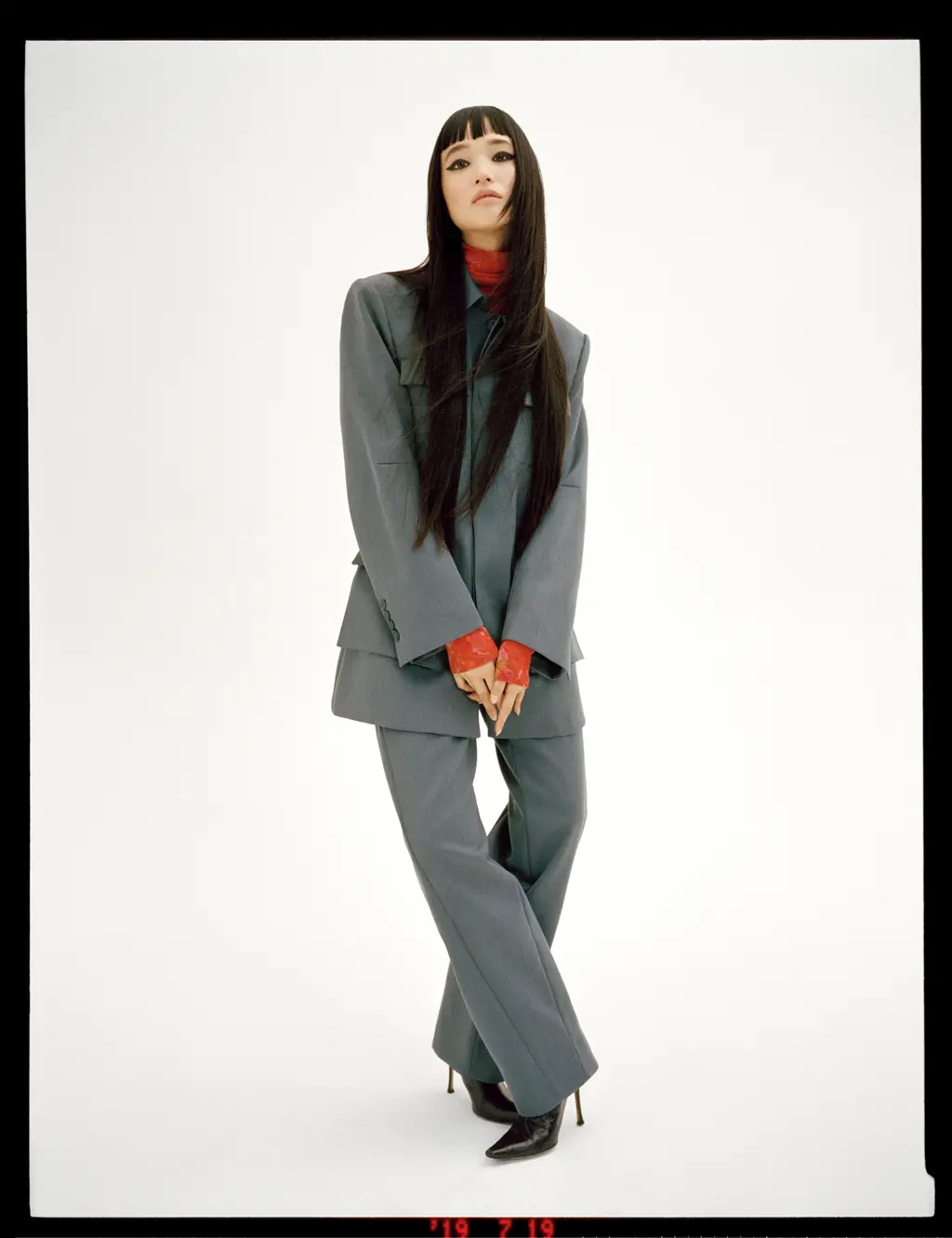
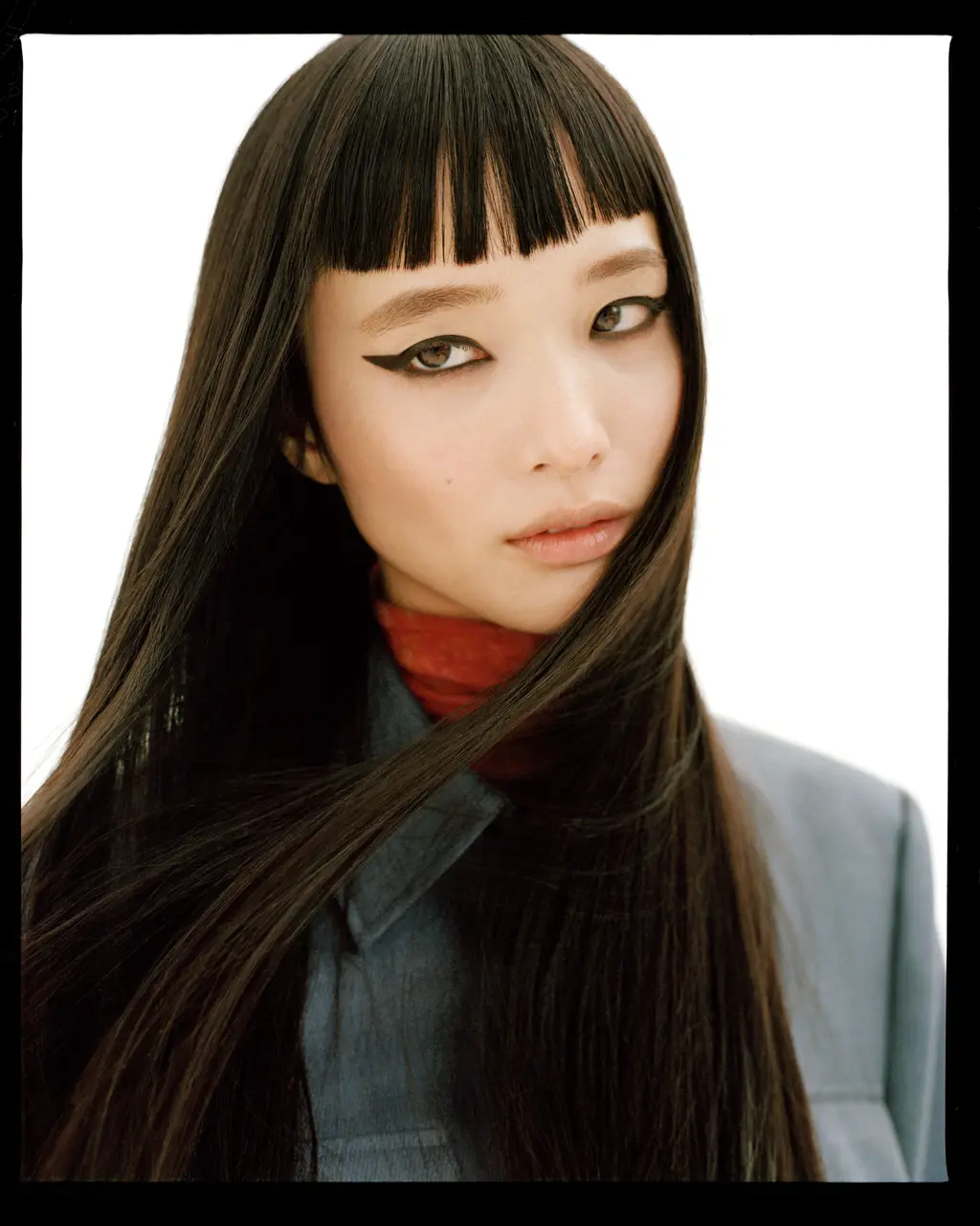
Ximon Lee
I know you like to manipulate materials and transform them in a way that’s completely different from how they were initially intended to be used – where does this interest stem from?
There are two types of people in the world: The rationalists, who believe reason comes from one’s inner mind, and the empiricists, who believe in trials and experiments, they try things out until the truth is found. I belong to the latter.
Touching the fabrics, folding them, deforming them, draping them, these endless possibilities on the fabrics really excite me and foster new ideas. Design ultimately is about transformation; anyone with a needle and some fabrics could make clothes, but it’s the process of transforming something into its upgraded version that appeals to me.
I use all kinds of materials to apply onto garments: silicon, bleach, spray paint, plastic folio, lingerie hooks. My favourite manipulation is probably the mint colour acid wash I developed for my AW16 collection. This denim wash was used in different ways many seasons after.
What is your favourite era in history, fashion-wise? and why?
The ’80s. It’s one of the most electric decades in fashion and a lot of genderless silhouettes emerged during this period. I’m enjoying the bold energy that came through the fashion during this era.
Favourite fashion memory in history?
I like the topless-leather-pants look of Tyler Durden from Fight Club. For me, that’s a major fashion moment in recent cinematic history that left a lasting impression on me.
I know you were raised all over China. How has your background and upbringing influenced your work?
The fact that even as a Chinese, I could not be grouped into any specific category has been with me since I was young. My Korean roots always made me a bit different too, but I could also integrate quickly into any new surroundings. Retrospectively, it’s the best thing that happened to me. Always being exposed to new environments gave me different perspectives and ways of thinking starting at an early age. I have had many people tell me that they cannot categorize my work easily – maybe it’s because my upbringing also couldn’t be easily put in a box.
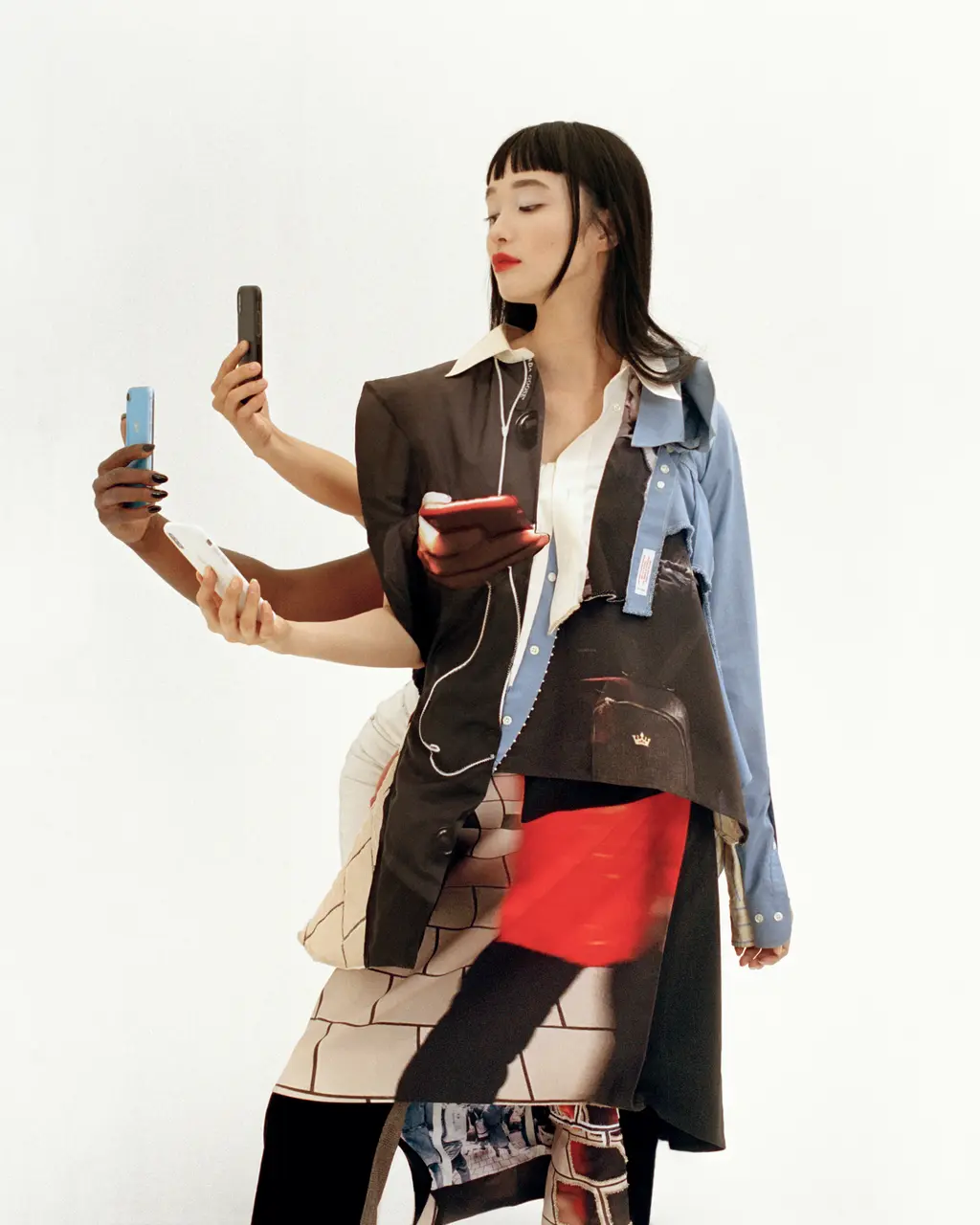
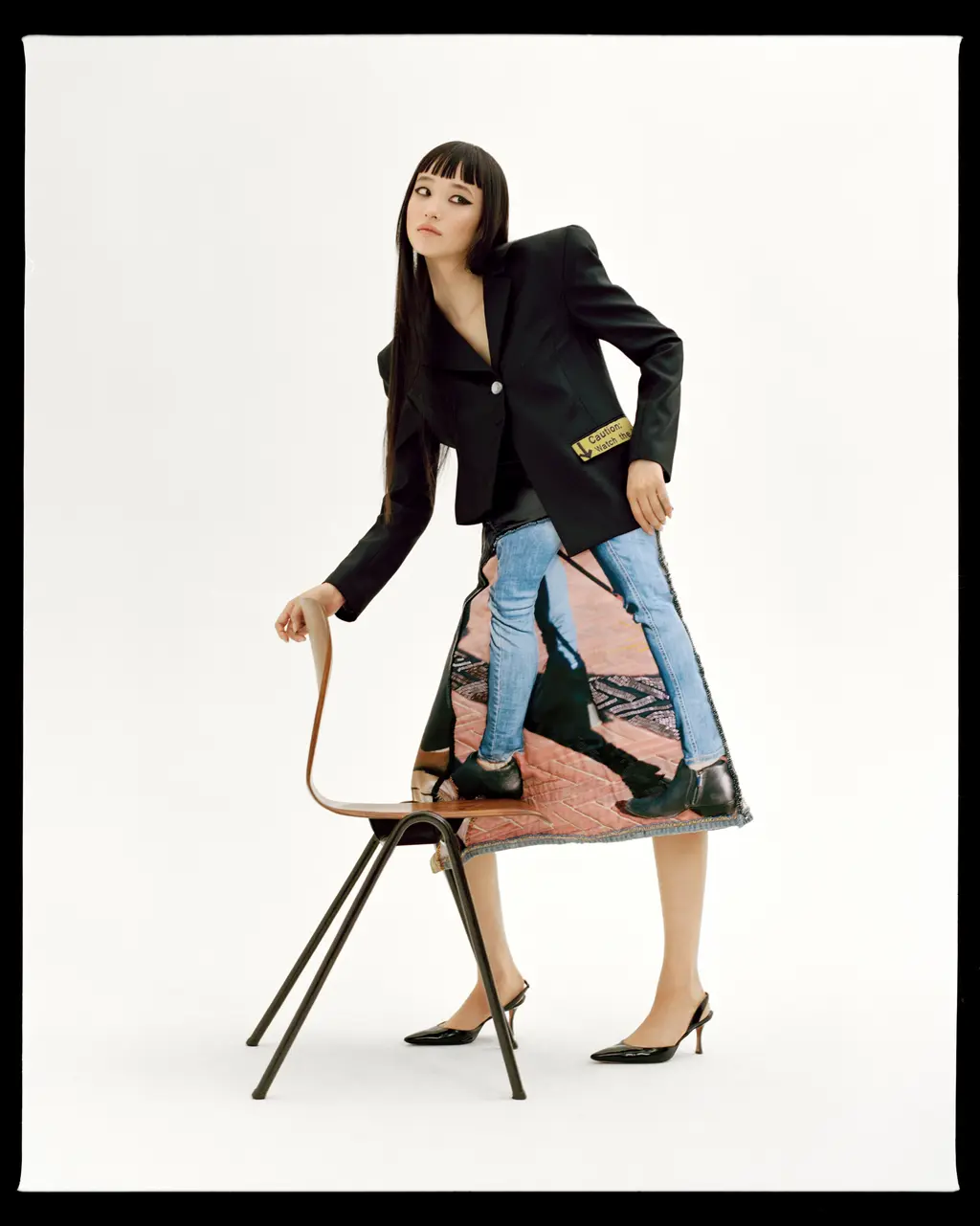
Limeng Ye
Age: 25
Are the photoreal and photographic prints that you use taken from photos that you take yourself?
Yes, I took them by myself. The concept is about moments. As everyone sees things in different ways, I prefer to take my photos and record inspired moments.
Can you please elaborate on what went into making the two pieces featured in your SS17 collection, Blind?
Part of [the pieces] are [made from] real denim and others are photocopies of denim garments. I explored what the world might look like only sensed by tactility. I touched my clothes with my eyes closed and recorded the whole process on my phone. I took hundreds of images of this. All of the collages were naturally generated based on my documentation of the experiment of creating a tactile world.
I love how you spin such avant-garde, directional looks from photoreal prints that are, alone, very pedestrian and ordinary in nature. Is there any symbolism behind this?
The reason why I chose pedestrian is the crowd in New York. I was looking for inspiring moments in my daily life containing interesting combinations in [different] scenarios. And people who passed by became my inspiration.
How has Eastern society and culture influenced your designs?
Eastern culture [lies at the] root of my thinking. The art, philosophy, and literature in eastern society and culture are part of me. They might not appear in visual aspects in my works, but they are incorporated deeply throughout.
Creative direction Paul Bui. Model Yuka Mannami at The Society. Makeup Grace Anh. Hair Shinya Nakagawa. Casting Director Bert Martirosyan. Photography Assistant Chris Parente. Styling Assistants Yukino Moore and Amber Nicole Alson. Make-up assistant Sena Murahash. Special thanks to Milk Studios.











